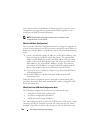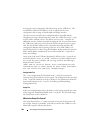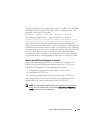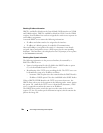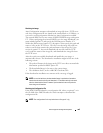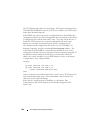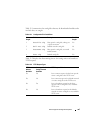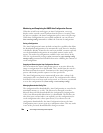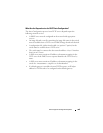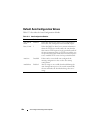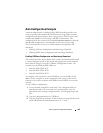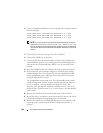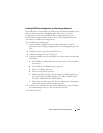
398 Auto Image and Configuration Update
Monitoring and Completing the DHCP Auto Configuration Process
When the switch boots and triggers an Auto Configuration, a message
displays on the console screen to indicate that the process is starting. After
the process completes, the Auto Configuration process writes a log message.
When Auto Configuration has successfully completed, you can execute a
show running-config command to validate the contents of configuration.
Saving a Configuration
The Auto Configuration feature includes an AutoSave capability that allows
the downloaded configuration to be automatically saved; however, AutoSave
is disabled by default. If AutoSave has not been enabled, you must explicitly
save the downloaded configuration in nonvolatile memory on the stack
master. This makes the configuration available for the next reboot. In the
CLI, this is performed by issuing a write command or copy running-config
startup-config command and should be done after validating the contents of
saved configuration.
Stopping and Restarting the Auto Configuration Process
You can terminate the Auto Configuration process at any time before the
image or configuration file is downloaded. This is useful when the switch is
disconnected from the network. Termination of the Auto Configuration
process ends further periodic requests for a host-specific file.
The Auto Configuration process automatically starts after a reboot if the
configuration file is not found on the switch. The configuration file will not
be found if it has never been saved on the switch, or if you issue a command
to erase the configuration file (clear config or erase startup-config).
Managing Downloaded Config Files
The configuration files downloaded by Auto Configuration are stored in the
nonvolatile memory as .scr files. The files may be managed (viewed or
deleted) along with files downloaded by the configuration scripting utility.
A file is not automatically deleted after it is downloaded. The file does not
take effect upon a reboot unless you explicitly save the configuration (the
saved configuration takes effect upon reboot). If you do not save the
configuration downloaded by the Auto Configuration feature, the Auto
Configuration process occurs again on a subsequent reboot. This may result
in one of the previously downloaded files being overwritten.



